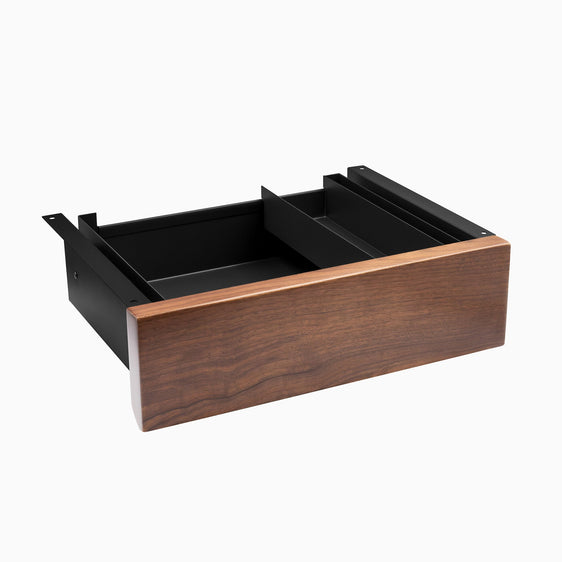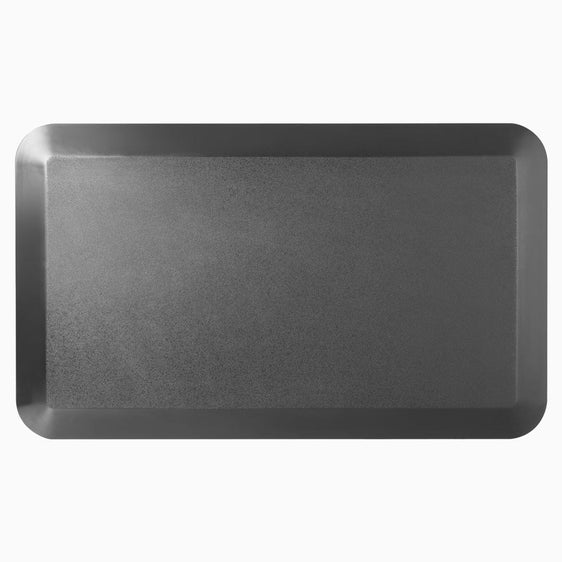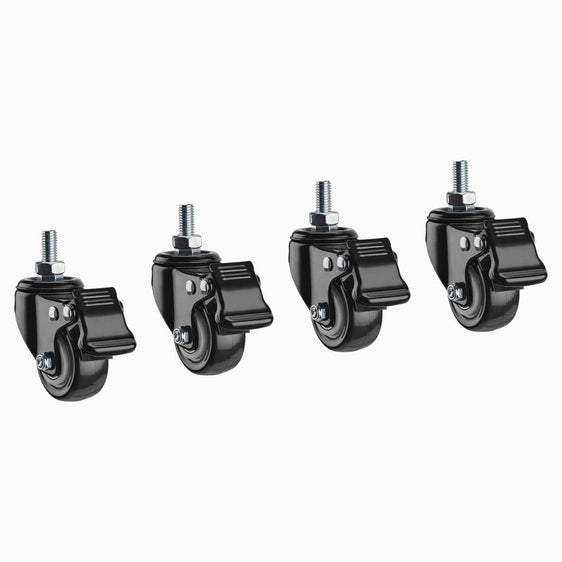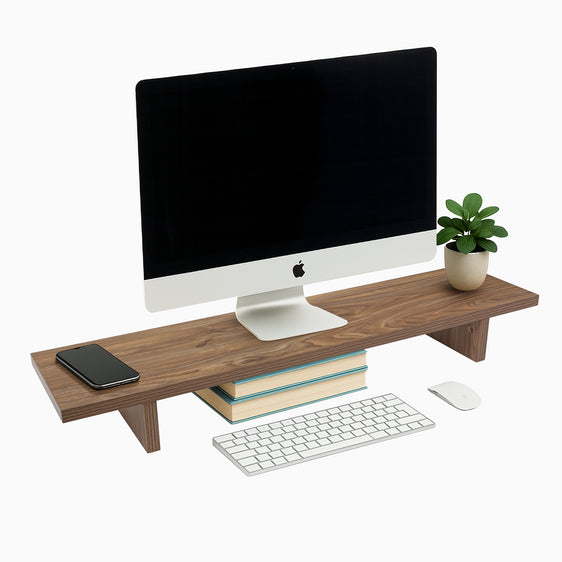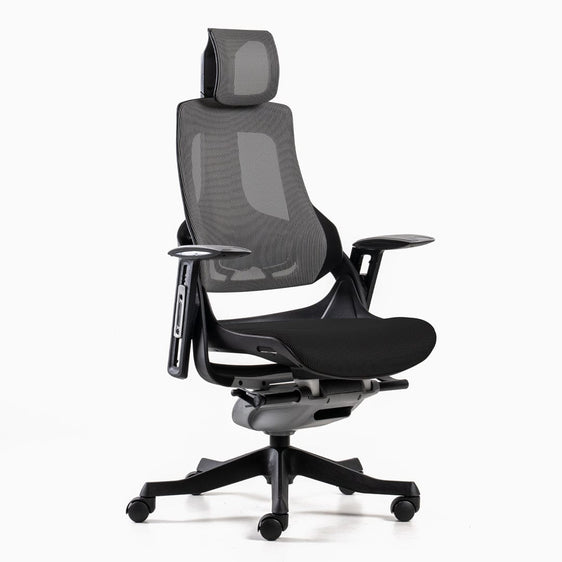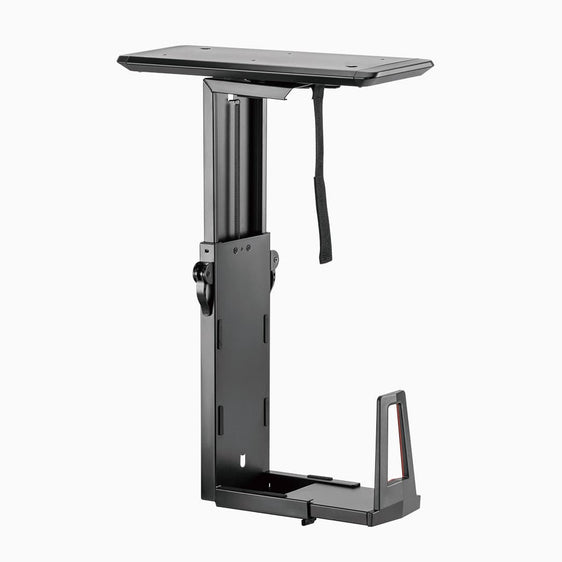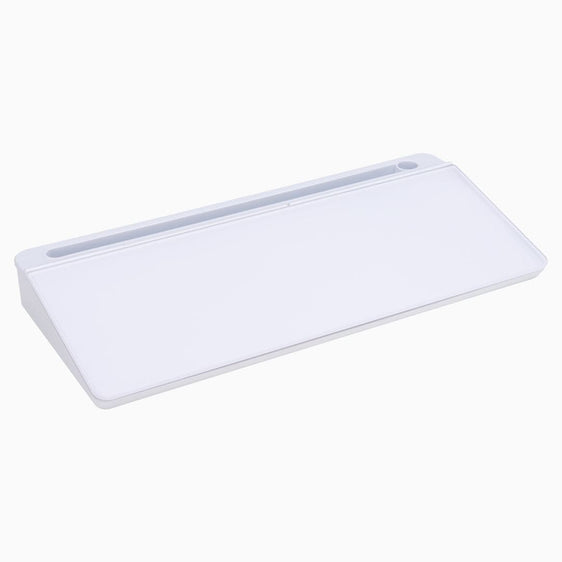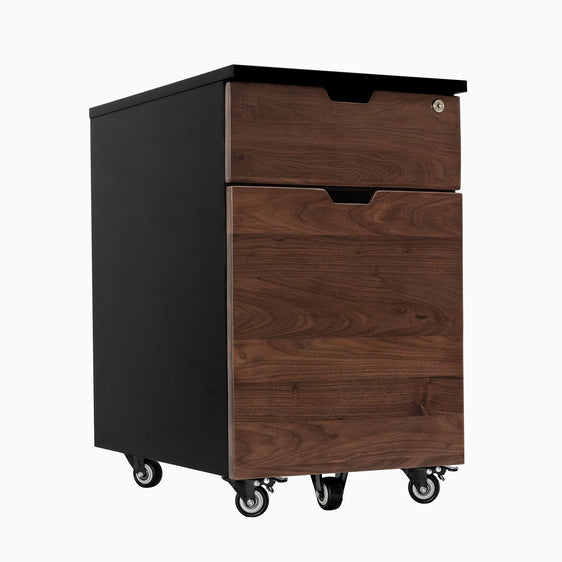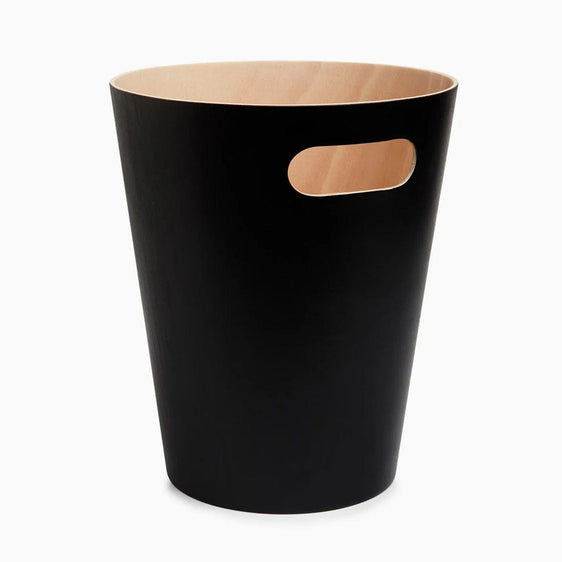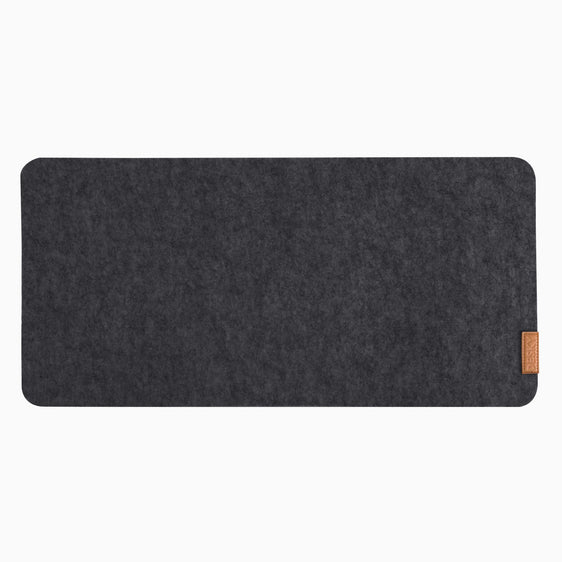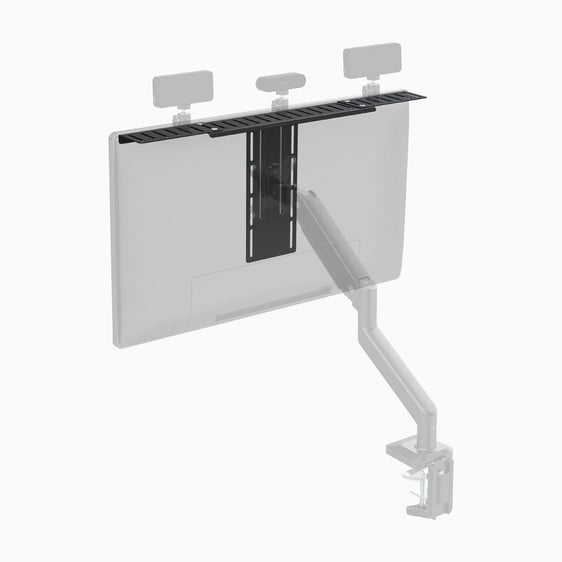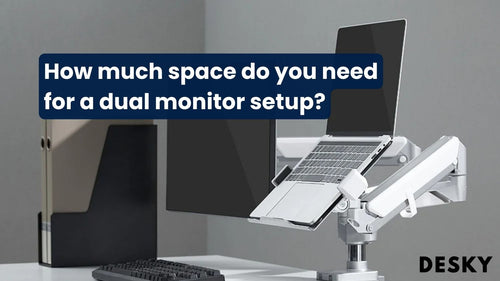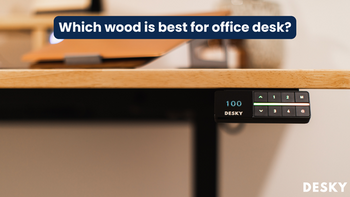
FAQ
Which wood is best for office desk?
Hayden AdamsWhen it comes to selecting the optimal wood for your office desk, a multitude of factors come into play. Your choice could notably impact the functionality of your workstation, its durability, and its aesthetic appeal. If you are looking to find out how to build a desk on your own, you are in the right place.
In this article, we elucidate the best wooden options available right in front of you.
Wood Desks
For those planning to create a home office, a solid wood desk can be a fantastic investment. Not only are these desks sustainable, but they also exude style, adding a touch of elegance to any workspace.
Solid wooden desks, such as those found in Desky's standing desk collection, come with multiple benefits, making them an excellent choice. Thus, if you're planning a workspace for long-term use, investing in a solid wood desk is beneficial. Below, we'll talk about all you need to know about different wood materials for desks, how they compare to one another and which wood is best for desks.
Best Kind of Wood For Desk Top
Optimally lightweight yet resilient, MDF (Medium Density Fiberboard) is a top contender owing to its suitability for whatever your desk demands. This engineered wood is a culmination of wood fiber, resin, and wax, promoting durability. It adjusts to various desk designs easily, making it a versatile workspace.
{{ spec_dual_hardwood_desk }}
If you prefer a traditional approach, hardwoods like oak and birch are commendable choices, particularly for stationary desks. Their resistance to denting and scratching enhances the longevity of tables.
For a touch of elegance, Walnut desk is an excellent pick. With a fine texture and superior strength, it amplifies a desk's natural appeal.
Popular wood types among many for tabletops are:
- Oak: is known for its durability and appealing grain patterns.
- Maple: is a hard wood with a light color, ideal for a contemporary look.
- Cherry: This wood's rich color deepens over time, making it a great long-term investment.
- Walnut: features a beautiful grain and a dark color for a sophisticated look.
- Mahogany: Its distinct red hue and straight grain make it a top choice.
The unique features of these wood types, with regards to their color, grain pattern, and hardness, make them desirable for building sturdy and certified long-lasting tabletops.
Cheapest Wood For Table Top
If budget is a vital factor for you, wood tabletops made from softer types, such as pine might be your best bet. As a lighter and more cost-effective option, pine offers a great solution for those looking for affordability. It is one of the best wood for desk to get as it is easily acquired.
However, bear in mind that softwoods, though more budget-friendly, are not as durable and can dent easily.
Common Tabletop Material
Wooden tabletops, particularly those made of natural plywood or solid wood species like oak, are common due to their strength and appealing aesthetics.
However, other materials such as laminate, veneer, glass, and metal are also frequently used, each offering unique benefits. Your ultimate choice should reflect your aesthetic preferences, durability needs, and budget.
Best Wood For A Standing Desk

When considering a standing desk, bring your focus to the material's robustness. Aspects such as durability and weight assume greater importance. Ergo, again with MDF, it proves itself with an unbeatable mix of lightness, strength and affordability.
However, by venturing towards more noticeable luxury, solid wood increases the aesthetic value of your workspace. While oak and birch show off their strength, walnut shines with its rich color and straight grain. All these wood types exhibit versatility and we can argue for each why they are the best wood for desktop, making them choice picks for crafting a well-designed standing desk.
Oak
Is Oak A Good Wood For Furniture?
Undeniably, oak stands as a robust contestant in the arena of furniture making. This wood, known for its strength, can withstand frequent usage and wear and tear without losing its charm. So for spaces that see a lot of activity--like family lounges or public dining areas—oak furniture tends to be a fantastic choice.
Benefits of Oak Furniture
Oak, hailed for its toughness, is among the best woods used in furniture design today. While inexpensive alternatives may suffice briefly, oak's longevity and resistance to surface stains and scratches make it a purchase that'll age well. Here are some strengths of Oak:
- Unmatched durability
- Resistance to surface stains and scratches
- Aesthetic appeal
- Longevity
Walnut
Transitioning focus to walnut wood and its application in desks is noteworthy. Walnut possesses dual characteristics of hardness and density, making it a suitable material for a desk or a dining table.
As verified by Wood Database, despite Walnut's hard makeup, it doesn't compromise on lightness. This makes it feasible to incorporate extensions or relocate the table effortlessly. Walnut's characteristic color diversity and grain patterns add to its appeal, introducing a touch of luxury.
Is Walnut a Good Wood to Work With?
While assessing adaptability, Walnut vividly resurfaces. Its latent resilience, flexibility, and beauty signify a comeback in interior design and the woodworking realm. It's an exquisite wood to collaborate with, making it a desired selection for several furniture elements.
Walnut vs. Oak
In the contest between walnut and oak, Liberon states that oak takes the upper hand in becoming a synonym for endurance and resistance to moisture and decay.
Although walnut is considerably robust, its density falls a bit short of oak. This consequently renders a home office desk setup more susceptible to knicks and scratches. Oak's elevated durability thus makes it a qualified winner.
Bamboo
Suitability Of Bamboo For Desk
Bamboo, especially engineered wood from bamboo, is redefining the way we perceive office desk construction. Recognized for its high tensile strength, bamboo is both durable and lightweight. The astounding tensile strength of bamboo stems from its natural fibrous structure, rivaling even some traditional construction materials.
Here's a fact: Bamboo isn't hard on the bank account. The value of bamboo office desks is that they offer high durability and strength at a relatively lower cost compared to other materials. Efficiency, affordability, and versatility make bamboo an attractive choice for office desk construction.
Strength Of Bamboo Desks
Bamboo's strength is unparalleled in many respects. Here's an intriguing fact: This humble grass, when mature, can outperform steel in terms of tensile strength. When compared to steel, bamboo has a tensile strength that is 3- 4 times greater per unit weight.
One way to take advantage of bamboo's strength is to use it as a material for furniture, such as desks. That's why our Desky Dual Bamboo Sit Stand Desk is a great choice for anyone looking for a stylish and sustainable adjustable desk. It has a triple-layered bamboo desktop that is durable and resistant to damage and can handle up to 140 kg.
The desk also has a dual motor lifting system that can adjust the height from 60cm to 125cm, making it suitable for users of different heights and preferences.
Is bamboo a robust desktop?
While bamboo belongs to the grass family, it is deceptively potent. It exceeds even oak (considered one of the hardest woods) by 40% in hardness. Therefore, a bamboo desktop delivers solid performance under weight, ensuring durability even in demanding work conditions.
The thickness of a bamboo desktop further bolsters its strength. At 25mm thick, bamboo doesn't buckle under pressure, even carrying a load evenly across a 182.9cm wide desk. This lends credibility to bamboo's reputation as a robust, reliable desktop material.
Is a bamboo desk worth it?
One of the standout features of bamboo is its impressive strength-to-weight ratio. A bamboo desktop can bear substantial weight, all while remaining light in itself. This attribute makes bamboo desks easier to move around, a bonus on moving days or during rearrangements.
Thus, the convenience factor significantly contributes to the worth of bamboo desks. Moreover, using a bamboo desk implies a conscious choice toward sustainability.
Bamboo is a renewable resource, maturing much faster than hardwood trees. Investing in bamboo desks is not only a winning proposition in terms of strength and weight, but also an eco-friendly move.
{{ spec_dual_resin_hardwood }}
Resin Tables
Endurance Of Resin Tables
Because of epoxy resin's superior strength and its ability to resist moisture and chemical damage, it is not prone to scratching.
This resilience helps preserve the table’s high-gloss sheen, eliminating the need for extra maintenance for many years post-installation. This resilience, combined with the durability of the materials used, makes resin tables highly resistant to scratching, even with everyday use.
Durability Of Resin Table Tops
Resin wood tables are highly durable and mimic natural wood textures to a great extent. The Desky Dual Resin Hardwood Sit Stand Desk is a great example of a durable resin table top that also offers functionality and aesthetics. It has a resin hardwood top that is made from natural wood and resin, giving it a unique and natural look. The resin also protects the wood from warping, cracking, or fading over time.
Incredible Lifespan of Resin Tables
Following the hardening of the resin, a remarkably resilient surface is formed. This lustrous finish continues to shine for numerous years without the need for habitual recoating. Contrastingly with other tabletop materials and finishes, resin coatings do not crack easily. It is the robustness of resins that stands the test of time.
The lifespan of resin tables is noteworthy due to their strong, durable nature. When well cared for, these tables can retain their beauty and functionality for many years, proving a wise investment for those seeking long-lasting furniture solutions.
Health Issues of Resin
Exposure to certain chemicals present in most epoxy resin systems might have adverse health effects. Those chemicals take form in vapours and spray mists which, when inhaled, can lead to irritation of the respiratory tract.
Individuals might develop symptoms reminiscent of asthma, such as chest constriction, breathlessness, coughing, and wheezing. These manifestations may arise immediately post-exposure or have a delayed onset, with nighttime exacerbations.
Nonetheless, proper ventilation during use, the use of correct protective gear, and following prescribed safety guidelines can mitigate risk significantly, according to the EPA.
Are resin tables safe?
Epoxy resin tables are manufactured by combining resin and hardener to make a solid plastic substance. While cured epoxy resin is typically safe to handle, uncured epoxy resin can be harmful if eaten or comes into contact with the skin.
Seek out epoxy resins with low or no VOC, BPA-free, phthalate-free, and styrene-free, since they are more environmentally friendly and less dangerous to your health.
One of the best and safest options for epoxy resin tables is our Desky Resin Hardwood Desk, which is made from sustainably sourced hardwoods and non-toxic epoxy resin. These desk tops are not only safe and beautiful, but also durable and stable, thanks to the resin river that locks the wood together.
Safety Of Using Resin Indoors
Epoxy resin, especially, is safe for indoor use in typical household or garage settings. Of all resin varieties, epoxy presents the lowest risk concerning harmful vapor release. Nonetheless, in usage scenarios with a larger volume of resin, boosting ventilation may be necessary.
Simple measures, such as the use of a common fan, can assist in keeping the indoor area safe during resin application. An emphasis on good ventilation is heavily underpinned in numerous OSHA safety guidelines.
Is Resin Toxic Once Cured?
Upon curing, epoxy resin becomes entirely non-toxic, making it safe for direct touch, regular use, or loading surfaces. Notable exemption involves the sanding phase post-curing epoxy dust must be avoided. Proper measures should be undertaken to avoid inhalation of the dust.
Optimal Thickness of Wood To Use For Desk
A good rule thumb for the optimal thickness of your office desk is between 25 to 38mm. Here's why - this thickness falls right in the range of standard desk height when combined with typical leg heights. And, such thickness means a sturdy desk that resists wobbling and sagging, ensuring a stable work platform over many years.
The type of wood also plays a part. MDF provides optimal stability at this thickness. With hardwoods like oak and birch, their inherent strength accommodates variations in desk thickness, all the while maintaining stability.
Best Material To Make A Desk Out Of
While other materials, like glass and metal, offer certain benefits, nothing quite compares to the enduring functionality and beauty of a wooden office desk. Classes of wood such as oak, pine, and maple are all stellar options boasting sturdiness and durability. Desk designs that straddle the line between trendy and timeless often employ this type of wood.
Feeling adventurous? Venture towards more exotic variants like teak or mahogany. Not only do these kinds offer dependable strength, but they also bring a certain charm to your workspace, making it a delightful place to work.
Best Kind Of Timber For Table
Oak stands out as a premier choice for table production, thanks to its robustness and long-lasting properties. Combining oak's unique grain pattern makes it an undisputed choice for tables like the Desky Dual Hardwood Sit Stand Desk, allowing the wood's natural beauty to be showcased.
How To Clean Wooden Desk
Identifying grease, dust, or smudges on your elegant wooden desk can be frustrating. However, you can regain the desk's glamour by implementing a simple cleaning process.
Mix water with a bit of vinegar and some olive oil makes a superb cleaning solution. This potent trio works wonders where vinegar effortlessly removes sticky dirt, while olive oil moisturizes the wood, giving it a fresh and shiny outlook. Remember, a soft cloth will work best for applying the solution.
Mixing the Solution
- Add a tablespoon of vinegar to a bowl of water.
- Add a few drops of olive oil to the mixture.
- Dip a clean cloth, squeeze out the excess mixture, and proceed to wipe the wooden desk surface.
- Finish by drying off the solution with a dry fabric to prevent warping of the wood.
Preferred Cleaner for Wooden Furniture
When it comes to cleaning wooden furniture, mild and non-abrasive cleaners take precedence. Products specially designed for wooden surfaces nourish the wood while ensuring it stays clean.
Eco-friendly cleaners, such as those based on citrus, are an excellent choice too. They also keep harmful chemicals at bay, preserving both the environment and your desk.
Murphy's Oil Soap: Suitable for Wood Furniture?
Yes, indeed. Murphy's Oil Soap is an acknowledged cleaning agent, particularly suited for wooden furnishing. It's a friendly, water-based solution that excels in preserving the aesthetics and condition of your wooden floors, cabinets, and furniture.
A noteworthy feature of this cleaner is that it's rinse-free and leaves no residue, ensuring a hassle-free cleaning experience.
Is water acceptable for cleaning wood furniture?
Water and wooden furniture, unfortunately, aren't the best of friends. But careful usage of water can indeed assist in cleaning, especially when diluted with other cleaning agents.
Remember to use it sparingly with a damp cloth and ensure that no waterlogged spots are left to avoid water marks or warping.
Best Natural Wood Cleaner
If you're genuinely passionate about keeping your wooden furniture in peak condition, but in the most natural way possible, our go-to solution entails merely three ingredients: water, vinegar, and olive oil.
Deceptive in its simplicity, this powerful trio cleanses, disinfects, and rejuvenates varnished wooden furniture. Plus, the olive oil imparts a healthy shine to the wood, while vinegar efficiently removes grease.
Best Way To Clean Wooden Surfaces
Strategies to maintain wooden surfaces range from choosing the right cleaning agents to using the correct cleaning approach. Specific techniques, such as directing the cloth along the wood grains, help reinforce the surface's aesthetics and durability. Regular cleaning schedules also ensure the longevity of your desk.
Additional Tips:
- Varnished wood requires a little moisture, so feel free to add a little water to your cleaning agent.
- For unvarnished wood, simply dusting regularly may be sufficient.
Conclusion
In summary, the best wood for your office desk is influenced by your desk type, its function and your design preferences. Selecting the right kind of wood enhances your desk's durability and overall working experience.
From MDF's versatility to Walnut's appeal, Oak's resistance, and the exotic charm of Teak and Mahogany, you have a spectrum of choices based on your style and usage needs when crafting a desk. Here's to a thoughtfully crafted workspace that not only serves its purpose but also brings you joy!

